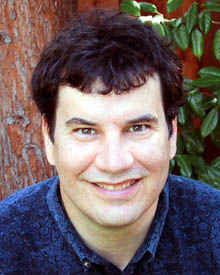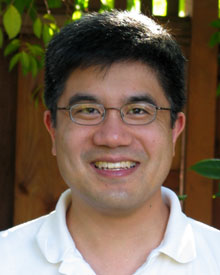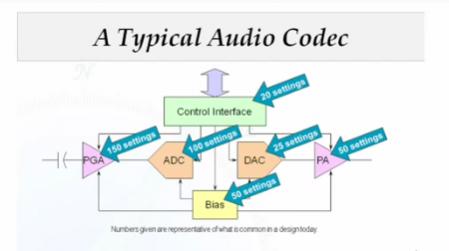Ken Kundert while at Cadence developed: Spectre, Spectre RF, Verilog-A and Verilog-AMS. About 6 years ago he and Henry Chang left Cadence and created a consulting company called The Designers Guide.

Ken Kundert

Henry Chang
John Pierce of Cadence interviewed Ken and Henry recently to find out how they transitioned from an EDA tool development role to a consulting role:
Here’s what I learned from the video:
- Designing an AMS chip and simulating all the blocks separately can still produce a chip that doesn’t work in silicon because it was never modeling and simulated as a complete system.
- Henry Change wrote a book in 1999 a book, Surviving the SOC Revolution, all about how to design and verify big digital and little analog.

- Analog complexity is a dominating factor, not just analog performance.
- EDA 360 has a goal to design and verify SOC with AMS content.
- A typical audio codec uses about 10,000 transistors and has the following building blocks:

- Audio codecs are expensive to simulate and can required overnight simulation runs. Simulators like Spectre could be used at the transistor level, however the run times would take days to weeks to complete all 500 simulation combinations required.
- Building Verilog-AMS models for the same Codec can run all 500 simulation combinations in a reasonable amount of time.
- A sigma-delta converter circuit is an example of using more digital circuits to replace analog functionality.
- Analog is stil difficult to design, especially with lower voltage supplies.
- Digital is being used to help calibrate analog circuit designs.
- Chip modes create a huge number of simulation cases.
- Old design goal was to center analog designs, now we use digital to tune the analog.
Summary
To learn more about applying modern AMS design and verification methodology visit Designer’s Guide Consulting where they have user forums to help you discuss your design issues and learn more about language-based design for AMS. These approaches complement transistor-level simulation and verification. You can use AMS simulation and verification tools from many EDA companies: Cadence, Mentor, Synopsys and Dolphin.
See our Wiki page listing all SPICE and Fast SPICE circuit simulators.
Share this post via:






Comments
0 Replies to “Words of AMS Wisdom from the Developer of Spectre, Spectre RF, Verilog-A, Verilog-AMS”
You must register or log in to view/post comments.